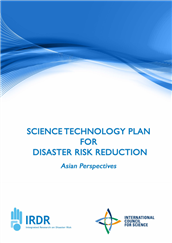First food: business of taste
Good Food is First Food. It is not junk food. It is the food that connects nature and nutrition with livelihoods. This food is good for our health; it comes from the rich biodiversity of our regions; it
Good Food is First Food. It is not junk food. It is the food that connects nature and nutrition with livelihoods. This food is good for our health; it comes from the rich biodiversity of our regions; it
This framework document has been prepared by the team at ICIMOD working on various aspects of ecosystem management in collaboration with the United Nations Environment – World Conservation Monitoring Centre
Dried plant products of North west Rajasthan which are cooked as a vegetable known as Trikuta-seeds of Acacia Senegal (L.) Willd., unripe fruits of Capparis deciduas (Forssk.) Edgew. and unripe pods of

This document presents a framework for the use of science and technology for disaster risk reduction and resilient development for Pacific Island Countries. It aims to support the implementation of both
The protest of Tamils against the ban on Jallikattu is a trigger. The pent-up anger against the successive policies of the central government and corporate encroachment of resources is the main cause of
<p>Present investigation was carried out in three blocks; Hiranagar, Dinga Amb and Marheenof Kathuadistrict of Jammu region of Jammu and Kashmir located in the sub-tropical zone to identify and document
The book is an addition to previous efforts by CTA to document and share proven practices, tools or policies that promote resilience and help farmers to address the challenges posed by climate change.
<p>There is increasing concern about the fruit growth, development and quality of wax apple (Syzygium samarangense), a widely cultivated fruit tree in South East Asia. The growth and development of this
<p>In Nagaland, three species (Tetragonula irridipenis, Tetragonula laviceps and Lophotrigona canifrons) of stingless bees were observed; however, most of the beekeepers were rearing T. irridipenis. Stingless
The five-year project (1st October 2013-30 September 2018) entitled ‘Improving Food Security Governance in South and South East Asia through strengthened participation of organizations of marginalized
<p>This research was carried out with the Adi and Galo tribes of East Siang and West Siang districts of Arunachal Pradesh, India to understand fishing methods employed by them using stones and boulders